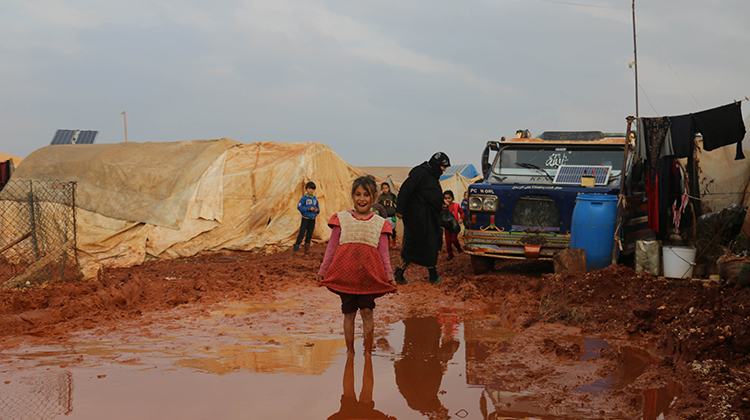Common Signs of Refugee Trauma Among Students and How Teachers Can Upskill to Empower Children From Refugee Backgrounds

Research shows that humanitarian migrants, who have been forcibly displaced from their homelands, have much higher levels of psychological distress than those who have not had this experience. The impact on children is severe and varied – during the refugee journey alone most will experience limited or no access to health care, clean water, or sanitation; disconnection from family, friends, and the broader community; disrupted schooling and opportunities for play; limited daily essentials.
Refugee trauma and forced displacement can disrupt the foundations of learning and wellbeing for thousands of children who arrive in Australia as refugees or people seeking asylum each year. It can also increase their risk of poor educational outcomes and mental health difficulties.
But children can learn, grow and flourish with specialist support that focuses on their healing and recovery from trauma.
Recognising the Signs of Refugee Trauma Among Children and Young People
It is in everyone’s interest to ensure refugee children and young people can access support to ensure their experience of trauma is not a barrier to learning and they have the same opportunities as their peers to thrive at school and beyond. Yet, it is common for the signs of refugee trauma to be overlooked in the classroom, or to be misunderstood.
For example, a student who is performing well academically may be assumed to not need therapy support, despite other behaviours. Conversely, students who are being impulsive or attention-seeking may fit the stereotype of a ‘naughty’ child, rather than being recognised as requiring specialist support.
Here are the most common signs of a child or young person needing therapy services, particularly if they are of a refugee or asylum seeker background:
- Lacking attention in class
- Difficulty with language skills - written, reading and spoken
- Isolated or withdrawn
- Unexplained pain or health problems
- Excessive attention seeking behaviour
- Poor impulse control
- Risk taking behaviour
- Hyper alert
- Mood - worried, stressed, quick to anger
- Self-harming
- Visa status anxiety
Upskilling our Ambitious Education Workforce
I regularly hear from teachers, principals, and others across the education sector that there is a strong desire among teachers to upskill in areas related to early intervention, trauma treatment and support, and expressive therapy such as art therapy. Unfortunately, there simply are not enough hours in the day for teachers to do their core roles as well as continuous upskilling and training at the level they would like.
The solution needs to be two-fold: supplying our teaching workforce with a sustainable level of training, while supplementing this training with specialist experts who can support early intervention efforts as well as take the next steps off the plates of teachers, including conducting therapy, following up with students, reporting and measuring impact, and tailoring support programs to suit each student’s individual needs.
Schools and educational institutions are already doing their utmost to stay open, keep students safe and healthy during an ongoing pandemic, and deliver exceptional education, and this is where they should continue to focus efforts. By investing in basic training for educators and support staff around effectively identifying and reporting on signs of trauma, and in partnerships with grassroots organisations with specialist support services, the education industry can effectively deliver on their core organisational priorities, while also ensuring our most vulnerable children and young people do not fall through the cracks of our education and support systems.
Image by Ahmed Akacha